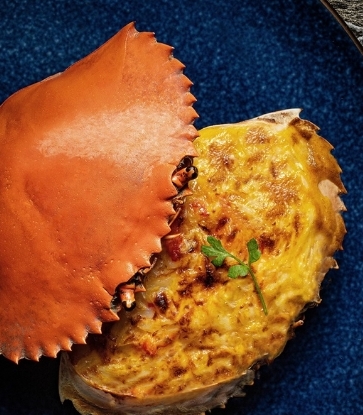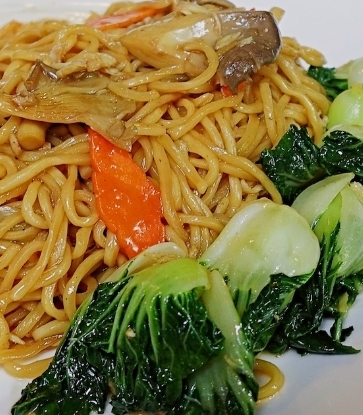Back in those days, Chan’s work was his whole life. He got up at 4am to prepare dim sum, staying at the restaurant for more than 10 hours every day. Understandably, such work schedule didn’t allow him to indulge in entertainment. Many cooks then, as the public came to perceive them, got their hands into gambling and lost all their income. Leaving work after midnight, Chan spent most of his down time at the cinema. Besides that, he could only go back to his home in Kowloon twice a month with his earnings in the pocket – travelling to the other side of the harbour was a time-consuming feat before the Cross-Harbour Tunnel was built.

During the 60s to 70s, cooks were lowly regarded, whether you work at a dai pai dong or an upscale restaurant. As Chan recalled, “Cooks were like a broken cotton-padded jacket: it’s not presentable but warm. They got by.”
Hong Kong experienced a gigantic transformation since then. New infrastructure in public transport and public housing were established. Free education was provided. These were followed by a booming stock exchange and property markets. In response, the restaurant business began to target the tycoons emerging from the vigorous economy. But not much was improved in the kitchen, child labour became extinct, free accommodation was taken away. It was still a job for people who failed at school, looking for a trade. Notable chefs in people’s memory could be counted on the fingers of one hand.
Things started to change when the Michelin Guide arrived ten years ago.
The First Three-starred Cantonese Restaurant
Chan said except for the bits and pieces he read on the newspaper, he had little idea about the Michelin Guide beforehand. And then one day he was informed by the hotel’s leaders that an undercover food critic might be there to taste his food.
“My colleagues on the front end were so nervous. Whenever they saw someone look around or ask questions, they assume that person was the undercover critic. But none of us had any idea,” he said, chuckling.
To Chan, the best solution is to serve every customer as well as they could. In the end, the call from the Michelin Guide finally came: Lung King Heen took the most coveted three stars. They are the first Cantonese restaurant to do that, and the only one in Hong Kong.
“The General Manager of the hotel at the time was about to burst into tears,” he noted.
As happy as he was, Chan only understood how much of an achievement it was until he received a hurricane of press coverage on the day the news was announced publicly.
“I had media coming for interviews before that, but not frequently. When that happened, there were a large group of reporters looking for me at the restaurant entrance. And I had a long list of interviews scheduled. They come from Hong Kong, Taiwan, China, Japan, the US, France and even the Baltic countries,” Chan added.
He was referred to as “Master”, “Tak Gor”, names that signified unprecedented reverence to Cantonese cuisine.

Cantonese cooks finally got the recognition they deserved. Not only did they become known among a wider audience, many chefs from Michelin-starred restaurants were offered lucrative contracts at new restaurants, due to the escalating interest to invest in gourmet Cantonese cuisine.
“For instance, Pui Gor (Mak Kwai Pui, the owner of one Michelin-starred Tim Ho Wan) worked at Lung King Heen. People might not understand it’s a big deal if you put it this way. But if you say he comes from a three Michelin-starred restaurant, it changes their perception immediately. Pui said having that in the resume helped him set up his business,” Chan explained by quoting a conversation with his old partner.
As for Chan himself, he receives several proposals to jump ship each month. Even though he never gives them too much thought, he does get more support from the hotel than before.
“There were only 35 of us when we first opened. I told the management the number of staff was inadequate, but they didn’t act upon the request. Since we made it on the Michelin Guide, the company has become more confident in us and distributed more resources to the restaurant. Now our team has grown to 45 members,” Chan said.

It was the patrons who made the biggest leap of attitude. Hong Kong people are very familiar to Cantonese cooking. Therefore to many, a meal at a Chinese restaurant was nothing more than a casual get-together. After being featured on the Michelin Guide, Cantonese food has become the centre of gravity in the local dining scene. Not only the locals begin to take it seriously, many customers at Lung King Heen come from overseas with an interest to know what it is. The reservation list says it all. Before taking the Michelin stars, diners could get a table if they made a booking two days beforehand. The first year when it was included in the Michelin Guide, the restaurant was at its maximum capacity even during the last order. You still have to be patient if you want to secure seats at Lung King Heen now. It’s usually fully booked a month in advance on weekdays and three weeks during the weekend. Some people even made reservations a year earlier to secure a table on Chinese New Year’s Eve.
Diners have grown more curious about Cantonese cuisine and taste food more carefully. Some put on the analytical lens and write reviews about their experiences. Chan shared with us two unforgettable occasions.
“There was a foreign cook who cried as he was eating. I asked his wife if they had any problem with the food. The cook told me he cried because it was so delicious. The other group of customers are from Hong Kong. They were laughing as the meal went on. And again, I asked them what happened. In the end they gave me the same answer: they laughed because the food was so good.”

The Michelin Guide changed the whole ecosystem of Cantonese cuisine and brought it up several notches in the pecking order of the gastronomic world. But Chan believes something has never changed, nor should it.
“Presentation has become a big factor in gourmet Cantonese cuisine nowadays. Certain dishes are served by person; some chefs would come out and communicate with the customers. We also have a wider range of ingredients, more quality produce from other countries available to us. For example, we import bitter melon from Okinawa, eggs from Japan, fresh Australian truffle. But these aren’t the foundation of Cantonese cooking.”
According to him, Cantonese food is different from its counterparts in the world of cuisines. It consists of many sub-categories, from siu mei to dim sum to cooked dishes, as well as many cooking techniques including steaming, stir-frying, deep-frying, braising and many more. There is a cornucopia of recipes to make the same dish, as every chef develops their own approach, or inherits it from their mentor. However, no one can find a golden formula or shortcut in preparing Cantonese dishes. The accumulation of experience and personal interpretation are the keys to success. The importance of the cooking basics will never disappear regardless of the era. That’s why Chan rejected all the foreign cooks’ requests for apprenticeship – the nuances and complexities of Cantonese food can’t be learned in a few years.
Perhaps, it’s the taste of experience which makes the only three Michelin-starred Cantonese restaurant so appealing.





















